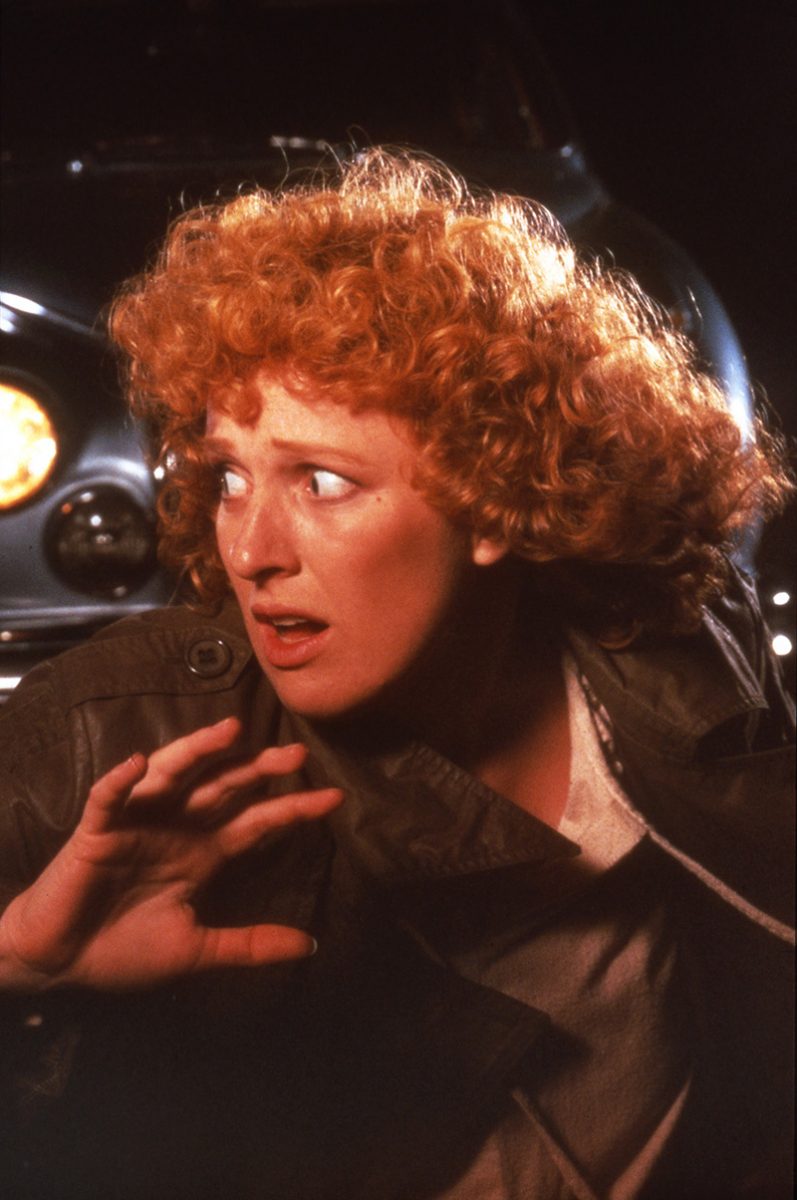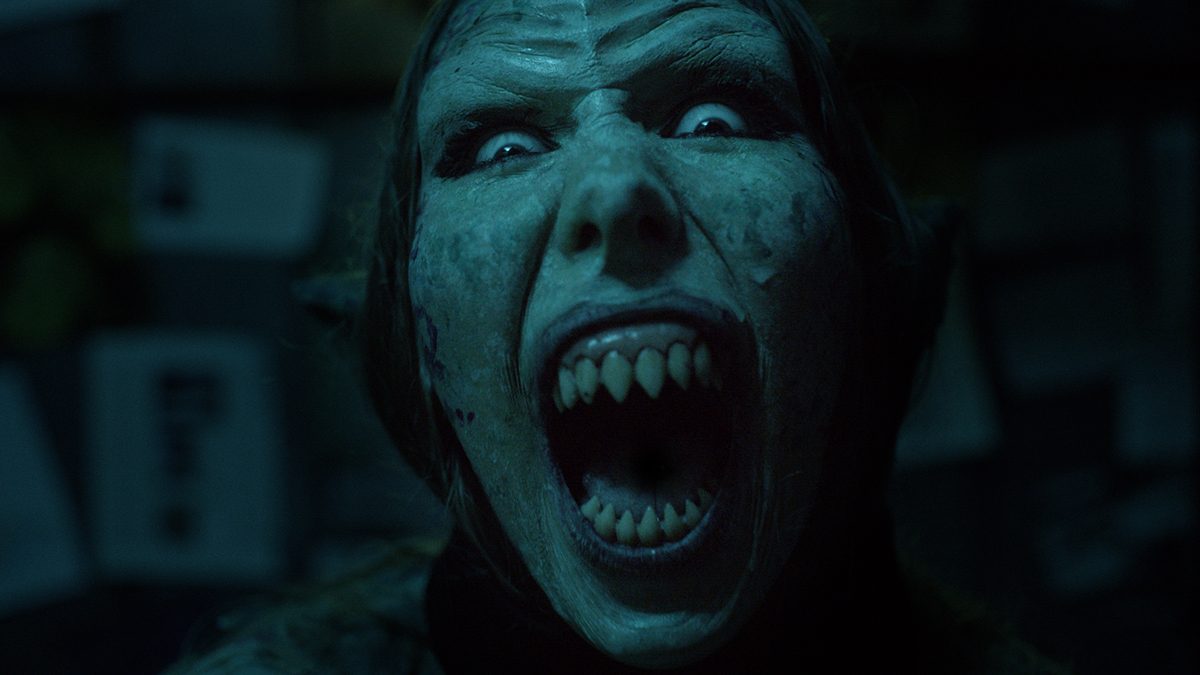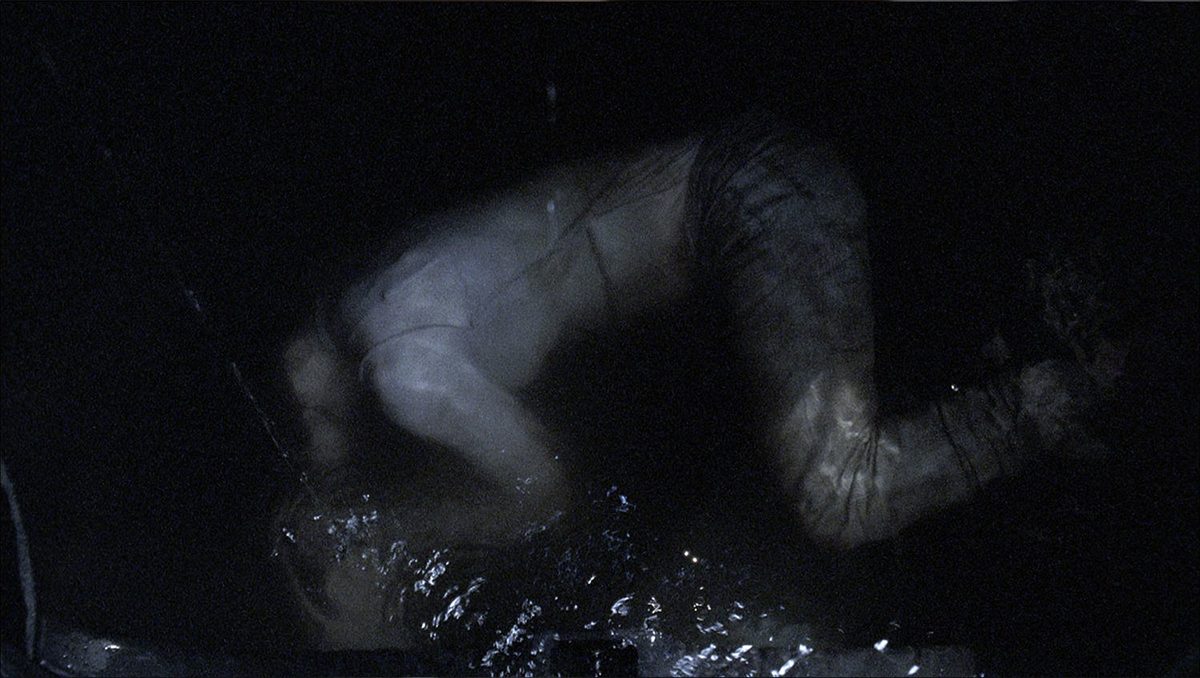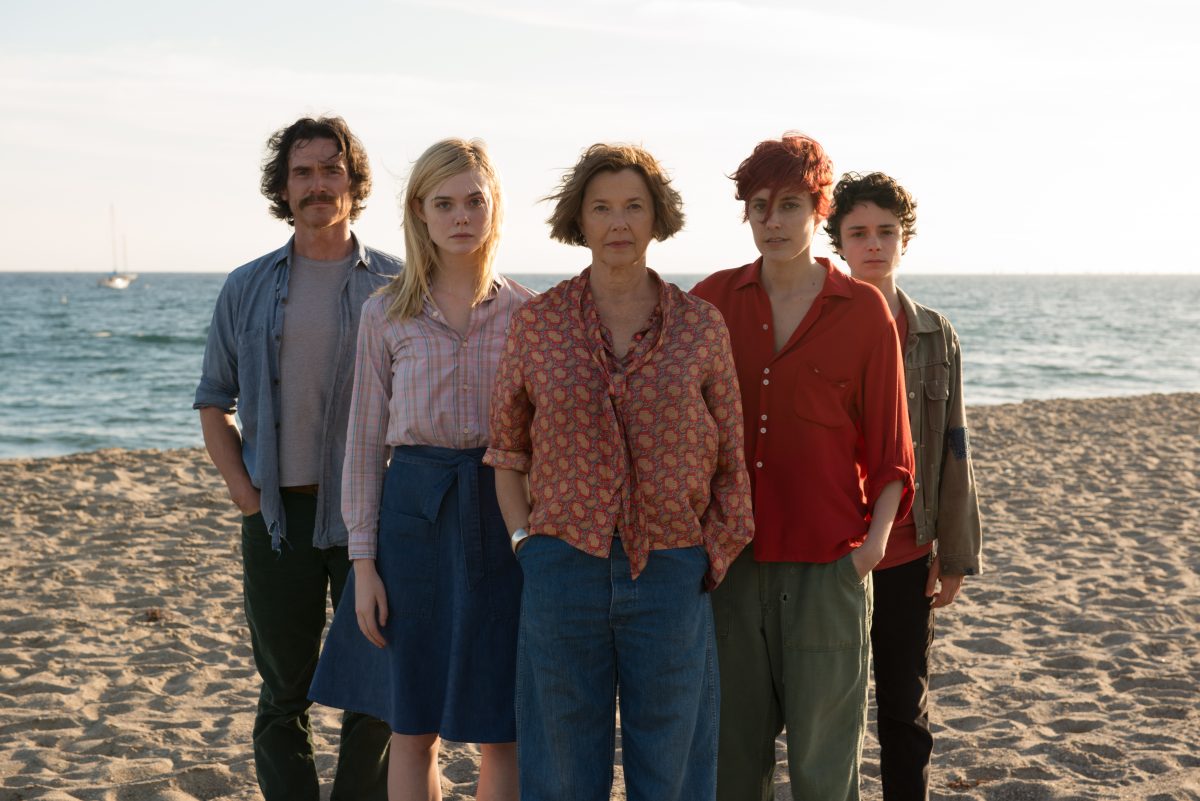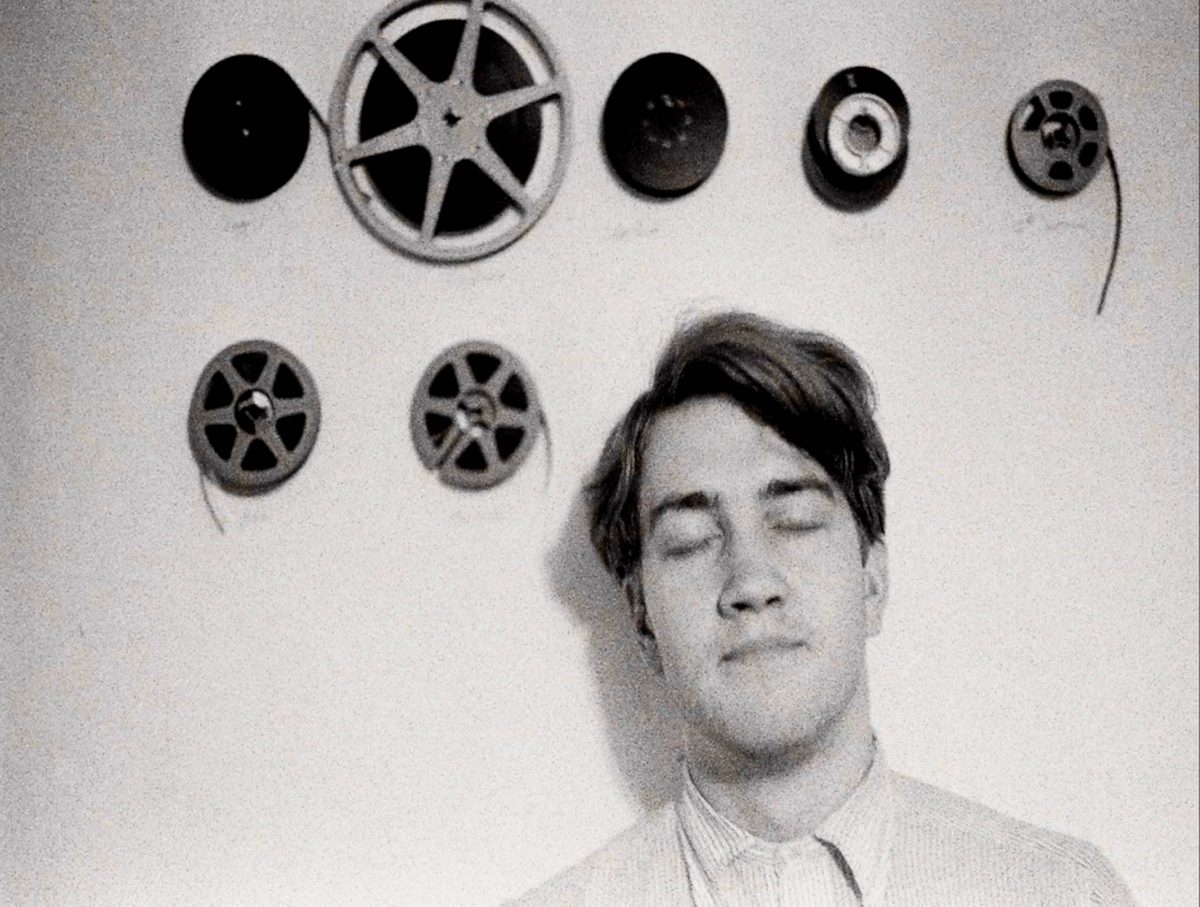Lauren Carroll Harris and Lucy Parakhina talk feminism in film then and now with the filmmaker at the 2017 Stranger With My Face International Film Festival.
Read more about Gaylene Preston and the 2017 Stranger With My Face International Film Festival:
realtime.org.au/stranger-with-my-face-discovering-gaylene-preston/
realtime.org.au/stranger-with-my-faces-dark-pleasures/
In early May I flew to Hobart in anticipation of some of the most interesting dark genre programming around, at an atmospheric film festival that’s hugely supportive of women filmmakers. This was my third experience of Stranger With My Face International Film Festival, now in its fifth year (not counting a hiatus in 2015). Founded in 2012 by Tasmanian filmmakers Rebecca Thomson and Briony Kidd, Stranger With My Face focuses on horror and other genre films directed by women. The one festival of its kind in Australia, it not only provides a rare opportunity to see genre cinema from a range of thought-provoking female perspectives, but also acts as an incubator for women’s feature film projects through its intensive Attic Lab workshop for selected participants.
This year was notable for the presence of renowned New Zealand director Gaylene Preston as both featured filmmaker and mentor for the festival’s developmental Attic Lab. One of the most striking features of the two subversive Preston thrillers included in SWMF’s retrospective program—Mr Wrong (1984) and Perfect Strangers (2003)—was how resonant their commentary on sexism and gender roles remained, despite the passage of time. In a post-screening Q&A, Preston remarked on the films’ implicit feminism, “All the things you see in Mr Wrong came from a point of rage.” While there were strong films at the festival that explored themes other than misogyny, those reviewed here—bar one—contain elements of this rage. All are explorations of the perilousness of feminine archetypes: the ingénue, the ‘slut,’ the dead girl, the siren and the saint.
Mr Wrong
As Preston put it, “There’s a whole interrogation of ‘nice’” in Mr Wrong, a film about a good-natured, unworldly young woman, Meg (Heather Bolton), who buys a powder-blue Jaguar from a used-car salesman so she can drive from the city to visit her parents on weekends. Meg has a pleasant, open countenance and an Annie-like shock of red curls that suggests she hasn’t quite reached the level of urban sophistication of her city housemates. She’s softly spoken, a bit of a worrier. Despite initial reluctance to purchase the large car, she takes the wheel with a sense of optimism, underlined by the film’s jaunty opening theme. This cheerful start is disrupted on her first long drive home out of Wellington, when, drawing up for a rest break at dusk, the car silhouetted against the sea, she has a terrifying, inexplicable experience—something that’s depicted simply yet so creepily it sets us, like Meg, on edge for the rest of the journey.
Mr Wrong is gloriously multifaceted. Looked at one way, it’s a suspenseful, not particularly serious thriller, enjoyably goofy at times (as in a scene where Meg gallivants through a field in her loud jumper after romantically reconnecting with a childhood friend). From another angle, it’s artistic Gothic horror, with its vivid nocturnal cinematography and nightmarish conjuring of rain-swept roads and pale apparitions, the heroine’s face appearing half in shadow behind the wheel. What makes the film singularly compelling, however, is the constant dull murmur of sexual aggression Meg endures; something that threatens to escalate if she fails to be sufficiently ‘nice.’
The ideals of freedom and independence represented by Meg’s car and city job are undercut by the recognition that there’s no escaping harassment, be it from corporeal sexists or an increasingly malevolent vehicle. In this way, and particularly for women, Preston quite viscerally aligns Mr Wrong’s supernatural horror with everyday oppression. It’s telling that some contemporaneous reviewers failed to pick up on her subtext. In her introduction to the screening, academic Deb Verhoeven quoted from the Evening Post, which praised Mr Wrong as, “a fine film endowed with feminine intuition but free of feminist cant.” This, despite the cathartic Gothic finale, a repudiation of violence against women and demonstration of female solidarity powerful enough to reach beyond the grave.
You can watch the trailer here.
Slapper
Everything that can go wrong in Slapper [Australia, 2017], will go wrong in Luci Schroder’s unflinching portrayal of a day in the life of Taylah (Sapphire Blossom), a teenage single mother who’s desperately in need of the morning-after pill—and is broke. The ensuing race against the clock exposes the harsh, inequitable side of hetero sex, compounded by class inequality and petty indifference; no need for supernatural horror in this short drama. Moving through grey, semi-rural suburbia and various chaotic domestic situations, Taylah attempts to hustle the money in increasingly degrading, dangerous ways, trailing her young daughter in her wake.
Schroder has garnered recognition for her music video work, including for the Alpine track “Hands,” which simultaneously deploys and subverts tropes of frank female sexuality. Slapper does away with the music-video gloss but retains the frankness with Blossom’s raw, aggressive physical performance. The fact that Taylah is capable of nastiness doesn’t lessen the empathy with her situation; it just underlines her fundamental lack of agency. Schroder and co-writer Sam West maintain a constant edge of aggression in their economic, skilfully paced narrative, with the excruciating denouement denoting the hopelessness and self-perpetuating misery of systemic oppression.
The Man Who Caught a Mermaid
With this impressively assured graduate short, Kaitlin Tinker [Australia, 2017] presents another sort of suburban nightmare in her ambiguous account of a retired Australian bloke who dreams of catching a mermaid, and succeeds—perhaps. In a seamless transition from gentle whimsy to stark horror, Tinker upends the traditional myth of the siren luring men to their deaths. In so doing, she exposes the darkly constrictive effect of romantic fantasies on women. The film complements Gaylene Preston’s Perfect Strangers, which also critiques the romantic ideal.
What Happened to Her?
Perhaps the bizarrely common filmic trope of the submerged female corpse is a successor to the mermaid. Part-video essay, part-creative documentary, Kristy Guevara-Flanagan’s short film What Happened to Her? [USA, 2016] is a startling assemblage of film and TV clips demonstrating the sheer proliferation of nubile female dead bodies on our screens. There’s no identification of individual titles, but the clips derive from serious, artistic drama (Twin Peaks, True Detective) as well as forgettable forensic crime shows. On her back or face down, in the sand, in the water (of course) or exposed to the gaze of some sad-eyed (usually male) detective in the morgue, “the body” is allowed to speak here through a quiet voiceover, as an actor relays her experience playing the naked corpse (or perhaps it’s several actors, talking about several corpses; it’s hard to tell) while a seemingly inexhaustible collection of examples is displayed. To uncanny effect, she details what it’s like to be told to strip naked and float face-down in water playing dead; to have bruises painted on you by a sleazy make-up artist; to feel vulnerable in front of all-male crews; to embody a real victim on a true crime show. The voice prompts thought about all the women—fictional and real—whose murders have become an entertainment fetish.
The Book of Birdie
Not polemical so much as a transportive mood piece, Elizabeth E Schuch’s first feature, The Book of Birdie [UK, 2017], nonetheless explores an historically powerful female entity—the Christian mystic. It begins with a teenage girl placed in a snowbound nunnery by her grandmother. Played expressively by Ilirida Memedovski, Birdie has the idealised appearance of a fairytale orphan with her heavy dark hair, pale skin and enormous eyes, on which the camera dwells in close-up. Quietly watchful, she’s both childlike and otherworldly.
The hushed atmosphere of the cloister in which Birdie finds herself is enhanced by the snow falling outside. A cocoon, it magnifies the usual intensity of adolescent emotions, giving rise to extravagant visions and fancies. Two other films about adolescent girls in female-dominated institutions are brought to mind: Vardis Marinakis’ numinous Black Field (2009), set in a medieval Greek nunnery, and Dario Argento’s Suspiria (1977), with its dreamlike bizarreness and vivid use of colour.
A strikingly visual director, Schuch cleaves to various hallmarks of Gothic Romance: the cavernous stone nunnery with its elaborate spiral staircase, Catholic paraphernalia, wraiths, blood, snow, the heroine’s appearance, her innocence and mysticism. But she pushes into unexpected territory by making Birdie a source of great energy rather than a wan victim. Joy imbues her brilliantly coloured visions/hallucinations; she jokes with ghosts, falls in love with the groundsman’s daughter and moves through the convent beatifically. Seizing all the imagery at hand in this austere environment, she devises idiosyncratic rituals incorporating Catholic iconography, superhero comics, menstrual blood and—most disturbingly—a miscarried foetus. Through her rituals, Birdie can gain power over female bodily pain and possible past trauma by creatively transforming them into something transcendent.
Sadly, though, Catholicism places inevitable limitations on its mystics; Birdie must eventually confront the impossibility of merging spiritual and corporeal worlds—though not before offering a glimpse of an alternative approach.
It was invigorating, as always, to see distinctive filmmakers at Stranger With My Face shining such personal light on female experience, challenging the dominant narrative through captivating, angry, inspired, artistic works from past and present.
–
Stranger With My Face International Film Festival 2017, Director Briony Kidd, Salamanca Arts Centre, Hobart, 4-7 May
Top image credit: What happened to her?
Now in its second year and launching in Sydney this week, the American Essentials film festival brings together an eclectic program of new features, documentaries and classic retrospectives. From Oscar winner Mike Mills’ 1970s-set family drama 20th Century Women, new South Korean-born auteur Kogonada’s intimate romance Columbus and the 1977 Jed Johnson New York comedy Andy Warhol’s Bad, to a new documentary on the visual art of David Lynch, the program traces a rich tradition of restless independent filmmaking. I caught up with American Essentials Artistic Director Richard Sowada to discuss the shifting landscape of festivals and independent cinema, and what the Australian film industry can take away from the work showcased in the program.
LG Like last year’s program, it seems we’re seeing smaller films here that tend to fall through theatrical and festival cracks.
RS They’re becoming rarer to see on any kind of release, these films, because the industry is perhaps losing a bit of trust in the audience, and wanting to take fewer and fewer chances.
LG Is it more economically viable for distributors to bundle these films into a festival, because individually they won’t make money? Is that the mandate?
RS Well, it’s not the mandate but it’s certainly the situation. The mandate behind festivals like this is to bring to light films that would not ordinarily be screened. Often what happens is that film festivals will find themselves going to the traditional marketplaces—Berlin, Sundance, Cannes, Toronto, Rotterdam—and then everything else falls in behind that. So the gene pool of films internationally, at film festivals, is largely from the same source.
LG Do you think these types of festivals are making up for a lack of local arthouse and repertory cinema, especially in Sydney?
RS Yes, the film festivals are filling that gap in screens around the country. There’s a film in American Essentials called Columbus, which is great; but because of its more niche nature [“an architectural appreciation symposium grafted onto the skeleton of a fairly typical Sundance drama,” Jordan Hoffman, Vanity Fair, EDs] I guess business backs away and it’s left for the festivals to screen. But what do you call ‘niche’? Is it the kind of person that you think will see the film, or is it the number of people who will come and see it? My general feeling, as a curator observing the industry, is that people in the industry—whether they’re producers, funding agencies, exhibitors, distributors or even punters—will call something niche if they don’t understand it. In my opinion, the more tailor-made you make the suit, the better it looks, and the more people look at it and go, “Oh wow, that looks cool.”
LG Shouldn’t distributors be creating that need for audiences to see the good films?
RS Yeah. It’s kind of a Catch-22 in many ways, in that these films aren’t being selected for commercial release because films like them have been selected before and failed. The next hit is based on the last success—not the current good idea. It’s a constantly backward-looking industry, and I think that the film sector is suffering from that to a degree, and has been for a little while—with the added pressure now of the Netflixes and the Amazons. The industry is going to have to retrain itself to change its perspective.
LG You’ve talked in the past about the nature of these American independent films, and how they’re not defined necessarily by the size of the budget but by their spirit and ideas. There’s a through-line in American independent cinema that we see in the work here, from the micro- to mid-budget to everything in-between. What can Australian filmmakers take away from this? Why aren’t they making work in this tradition, irrespective of the smaller size of the country?
RS That’s a good question. One [lesson] is you’ve just got to take a risk. Don’t compromise on the idea thinking, ‘Oh, if I go too hard here people won’t get it,’ or ‘No one will buy it.’ People like to be looked in the eye and spoken to directly.
LG Do you think funding bodies affect that grasping for broad audience reach? Is that an outmoded thing? How does it change?
RS Yes, yes. It does come from the funding agents, but it’s not just their fault. It comes from the lack of motivation [from filmmakers], to a degree, or a lack of trust in themselves. And the way that it always changes, every single time—I’m saying with a very broad brushstroke—is by doing it, the breakthrough. As soon as there’s something that busts through with its chest out and its legs kicking, people look at it and go, ‘Oh fuck.’ And that becomes the new norm. And you can throw in so many American examples of that, be they Kevin Smith (Clerks) or Tarantino or Kelly Reichardt.
LG Reichardt’s a great example, because her films, especially the earlier ones, are very low budget—but the ideas are there and the filmmaking’s there. You can’t blame a lack of money or infrastructure or whatever; there’s something else going on.
RS No, you can’t. And when you look at them—we screened Reichardt’s first film, River of Grass [1994], last year—they’re fucking incredible. But that is part of a tradition that includes Dennis Wilson’s Two-Lane Blacktop [1971]. It’s a continuum that can be charted through the individuals and through their ideas.
LG Do Australian filmmakers lack that continuum to draw upon and be a part of?
RS Well, yes and no. There is a big gap, no question, in Australian cinema in the 50s and early 60s. But that’s its own wellspring as well; you don’t necessarily need the traditions of cinema; you need to be in tune with what is around you, in your environment, including cinema. But I think that in Australia—very broadly—there is a lack of understanding of the traditions of international cinema. You know: here are the masterworks—let’s look at the Capras, the Maysles and the Pennebakers, and let’s look at the Bergmans and the Wellses.
LG You do sense this a bit with Australian filmmakers. And again, it’s not their fault necessarily, it’s this culture that doesn’t encourage seeking things out. Although America has the benefit of having very rich cultural channels through which to investigate cinema history, I don’t know if that’s the result of training or schooling in cinema.
RS It’s a lot of everything. But ultimately it’s up to the individual. You can talk about the funding agencies and the educational institutions, but it’s up to the individual. If you are into it, then you are into it, and there’s no stopping access, and there’s no stopping reading about the history, and there’s no stopping experiencing or imitating it. All you need is the motivation to dig into the roots. Musicians do it all the time.
LG And we’re in a moment where you have access to more media than ever before.
RS True. I don’t know what it is; it’s kind of like second-guessing the audience, thinking, ‘How can we sell this film,’ rather than ‘What is this film about?’ Again, I think that filmmakers suffer from the same kind of things that distributors may—and I’m not saying that all do—in that the next film is about the next success, not the current good idea. So that’s one of the takeaways. And it’s easy for me to say, but I wasn’t given my life in the arts. I had to really live it. Don’t be afraid. And look at the traditions.
A leading film curator and screen culture advocate, Richard Sowada is the founder and director of the Revelation Perth International Film Festival (1997-present) and was Head of Film Programs at ACMI (2006-15).
Palace Cinemas, American Essentials Film Festival 2017, Artistic Director Richard Sowada, launching Sydney 9 May, Melbourne 11 May, Canberra 16 May, Brisbane 17 May, Adelaide 18 May
Top image credit: Columbus


